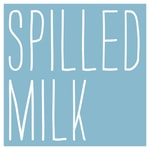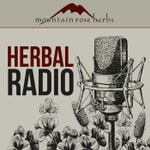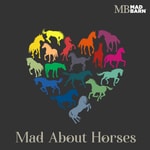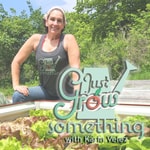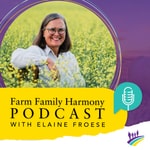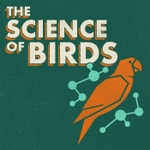CAHSS Podcast Series - Animal Health Insights – Details, episodes & analysis
Podcast details
Technical and general information from the podcast's RSS feed.
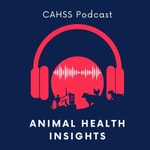
CAHSS Podcast Series - Animal Health Insights
Canadian Animal Health Surveillance System
Frequency: 1 episode/41d. Total Eps: 41

Recent rankings
Latest chart positions across Apple Podcasts and Spotify rankings.
Apple Podcasts
🇫🇷 France - nature
17/07/2025#93🇫🇷 France - nature
16/07/2025#82🇫🇷 France - nature
15/07/2025#76🇫🇷 France - nature
14/07/2025#66🇫🇷 France - nature
13/07/2025#61🇫🇷 France - nature
12/07/2025#56🇫🇷 France - nature
11/07/2025#47🇫🇷 France - nature
10/07/2025#41🇫🇷 France - nature
09/07/2025#21🇨🇦 Canada - nature
30/05/2025#99
Spotify
No recent rankings available
Shared links between episodes and podcasts
Links found in episode descriptions and other podcasts that share them.
See all- https://www.inaturalist.org/
136 shares
- https://www.domore.ag/
6 shares
RSS feed quality and score
Technical evaluation of the podcast's RSS feed quality and structure.
See allScore global : 47%
Publication history
Monthly episode publishing history over the past years.
Les vilains moustiques sous surveillance avec Dre Antoinette Ludwig et Marc Avramov. Perspectives en santé animale, Ep. 24b, 11 Jun 2024
Episode 26
mercredi 12 juin 2024 • Duration 29:41
Les moustiques - si vous vivez au Canada, vous devez faire face à ces insectes nuisibles pendant une grande partie du printemps et de l'été. Avec le réchauffement climatique, il est probable que nous verrons apparaître quelques nouvelles variétés de cet insecte irritant dans l'espace aérien canadien, et malheureusement, la variété des espèces signifie également que nous devons faire face à de nouvelles maladies à transmission vectorielle.
Les moustiques sont porteurs et contribuent à la propagation d'une variété de conditions infectieuses à une variété d'espèces - il est donc important pour la santé publique et la santé animale de garder "l’œil dans le ciel" et de surveiller leurs mouvements, leur propagation et leurs préférences en matière d'habitat.
Heureusement, le Canada dispose d'un groupe de chercheurs qui surveillent et d'étudient ce phénomène. Dre Antoinette Ludwig, vétérinaire et épidémiologiste au Laboratoire national de microbiologie de l'Agence de la santé publique du Canada, et Marc Avramov, candidat au doctorat à l'Université Carlton, étudient les maladies transmises par les moustiques et le risque qu'elles représentent pour les populations humaines et animales, ainsi que l'impact du changement climatique sur ces maladies.
Liens d’intérêt:
- Informations sur la Dre Antoinette Ludwig et ses recherches
- Détails du projet Timo-CS
- Relationships between water quality and mosquito presence and abundance: A systematic review and meta-analysis
- Avramov, Marc & Thaivalappil, Abhinand & Ludwig, Antoinette & Miner, Lauren & Cullingham, Catherine & Waddell, Lisa & Lapen, David. (2023). Relationships between water quality and mosquito presence and abundance: A systematic review and meta-analysis. Journal of Medical Entomology. 10.1093/jme/tjad139.
- Informations sur Marc Avramov et ses recherches
Monitoring malicious mosquitoes with Dr. Antoinette Ludwig and Marc Avramov. Animal Health Insights, Ep. 24a, June 11, 2024
Episode 25
mercredi 12 juin 2024 • Duration 26:56
Mosquitoes – if you live in Canada, you deal with these pesky bugs for a significant portion of the spring and summer. With warming global temperatures, it is likely that we will see a few new varieties of this irritating insect appear in the Canadian airspace, and unfortunately, this also means we have some new vector-borne diseases to deal with.
Mosquitoes carry and help to spread a variety of infectious conditions to a variety of species – so keeping an “eye on the sky” and monitoring their movement, spread, and habitat preferences is important to public health and animal health.
Luckily, Canada has a group of researchers that are working to monitor and study this very thing. Dr. Antoinette Ludwig, a veterinarian and epidemiologist with the National Microbiology Laboratory at the Public Health Agency of Canada, and Carleton University PhD candidate Marc Avramov, both study the diseases transmitted by mosquitoes and the risk they pose for both human and animal populations, as well as the impact of climate change on these disease patterns.
Links of Interest:
- Information about Dr. Antoinette Ludwig and her research
- Timo-CS project details
- Relationships between water quality and mosquito presence and abundance: A systematic review and meta-analysis
- Avramov, Marc & Thaivalappil, Abhinand & Ludwig, Antoinette & Miner, Lauren & Cullingham, Catherine & Waddell, Lisa & Lapen, David. (2023). Relationships between water quality and mosquito presence and abundance: A systematic review and meta-analysis. Journal of Medical Entomology. 10.1093/jme/tjad139.
- Information about Marc Avramov and his research
Les règles sur la rage avec Dre Nancy Rheault. Perspectives en santé animale, Ep. 18, 26 Sept 2022
Episode 18
mardi 27 septembre 2022 • Duration 20:39
Chaque année, une journée est dédiée à une campagne internationale de sensibilisation pour souligner l'importance de la rage, une zoonose mortelle qui touche des milliers de personnes et d'animaux dans le monde. En Amérique du Nord, nous avons la chance de rarement penser à la rage - généralement lors d'une morsure d'animal, ou peut-être de faibles souvenirs du film "Old Yeller", sinon quand une chauve-souris entre dans la maison. Les vétérinaires canadiens peuvent voir un ou deux cas de rage à quelques années d'intervalle chez des chevaux, des bovins, des chiens ou des chats, et occasionnellement chez d'autres espèces de mammifères. Avec l'afflux de chiens importés au Canada pendant la pandémie, la rage et la possibilité que des personnes soient exposées à ce virus sont devenues un risque réel. Le Dre Nancy Rheault, Directrice principale et Vétérinaire en chef adjointe, à la Division de l’importation et de l’exportation des animaux pour les affaires internationales à l’Agence Canadienne d’inspection des aliments, s'entretient avec nous aujourd'hui pour nous expliquer certains changements récents apportés aux exigences d'importation de chiens et les raisons de leur mise en œuvre pour protéger les Canadiens.
Liens d’intérêt:
- ACIA Avis à l'industrie : Nouvelle mesure interdisant l'entrée de chiens commerciaux en provenance de pays à haut risque pour la rage canine
- Pays considérés à haut risque pour le variant canin du virus de la rage
- Posez des questions avant d'acheter ou d'adopter un chien
- ACMV Importation de chiens
- ACMV Liste de contrôle des vétérinaires pour l'importation d'un chien (2018)
- Preventing Rabies in Imported Dogs - Dr. Scott Weese
- Centre d'expertise et de référence en santé publique - La Rage
- Rage chez les animaux
Where the Wild Pigs Are with Corey Kramer. Animal Health Insights, Ep. 17. July 21, 2022
Season 2 · Episode 17
jeudi 21 juillet 2022 • Duration 30:29
Wild pigs are known to wreak environmental havoc across all types of landscapes, and they can be difficult to find, let alone to manage once they’re established in an area. Information about the habitats that Canadian wild pigs utilize can help inform decisions about how best to manage wild pig populations, and perhaps may also be useful to decrease crop damage or livestock interactions at the wildlife-agricultural interface.
Mr. Corey Kramer, previously a Masters student from the University of Saskatchewan, and currently a Biology PhD student at San Diego State University, investigated the habitat use and movements of invasive wild pigs in Canada, and he shares the results from this research with us on Animal Health Insights.
Links of Interest:
- Understanding resource selection, resource use, and landscape connectivity for invasive wild pigs (Sus scrofa) in the prairies; implications for management. Corey Kramer, April 2021.
- Mr. Corey Kramer, Dr. Melanie R. Boudreau, Dr. Ryan S Miller, Mr. Ryan Powers, Dr. Kurt VerCauteren, and Dr. Ryan K. Brook. Summer habitat use and movements of invasive wild pigs (Sus scrofa) in Canadian agro-ecosystems. Canadian Journal of Zoology. https://doi.org/10.1139/cjz-2021-0116 (March 2022)
- Reporting Invasive Wild Pigs in B.C.
- Wild Boar in Alberta
- SCIC Feral Wild Boar Control Program (Saskatchewan)
- Squeal on Wild Pigs, Manitoba
- Reporting Invasive Wild Pigs in Ontario
- Wild pigs/wild boar in Quebec
- Reporting details for other provinces/territories from the CWHC
- iNaturalist app (wild pig sightings can be added into this app)
- Canadian Wild Pig Research Project
Recognizing Resistant Hookworms with Dr. John Gilleard. Animal Health Insights. Ep. 16, June 12, 2022
Season 2 · Episode 16
dimanche 12 juin 2022 • Duration 40:11
Our veterinary patients deal with the effects of “worms” in a number of ways – we frequently see animals who suffer from gastrointestinal illness, weight loss, blood loss, and occasionally kidney, cardiac, muscular or neurologic diseases that all may relate to parasitic infections. If you’re a pet parent or animal producer – your eyes may glaze over a bit when your vet discusses the health risks associated with parasites – but these risks are significant. Many parasites have zoonotic potential – they can be shared between animals and humans – and this is part of why veterinarians continue to discuss these creatures with our clients – we want to protect animal health AND the health of humans who care for and interact with animals.
The parasite risks in a specific region constantly change as parasites migrate (along for the ride in an infected animal) around the province, country, continent, or around the world. In many species, including dogs, there is evidence that some parasites are developing resistance to certain types of deworming medications. One of these parasites is the canine hookworm – known as Ancylostoma caninum. Dr. John Gilleard from the University of Calgary has been involved in investigations into the emergence and diagnosis of these drug-resistant canine hookworms over the past few years. In addition to working as a Professor of Parasitology and the Associate Dean of Research at the faculty of Veterinary Medicine in Calgary, his research focusses on drug-resistant parasites and ways to investigate the emergence and spread of these in animal populations including cattle, other ruminants, and dogs.
Links of Interest:
- Persistent or Suspected Resistant Hookworm Infections, Clinician's Brief
- Multiple drug resistance in hookworms infecting greyhound dogs in the USA
Pablo D. Jimenez Castro, Abhinaya Venkatesan, Elizabeth Redman, Rebecca Chen, Abigail Malatesta, Hannah Huff, Daniel A. Zuluaga Salazar, Russell Avramenko, John S. Gilleard, Ray M. Kaplan, Multiple drug resistance in hookworms infecting greyhound dogs in the USA, International Journal for Parasitology: Drugs and Drug Resistance, Volume 17, 2021, Pages 107-117, ISSN 2211-3207, https://doi.org/10.1016/j.ijpddr.2021.08.005
- Multiple Drug Resistance in the canine hookworm Ancylostoma caninum: an emerging threat? Jimenez Castro, P.D., Howell, S.B., Schaefer, J.J. et al. Multiple drug resistance in the canine hookworm Ancylostoma caninum: an emerging threat?. Parasites Vectors 12, 576 (2019). https://doi.org/10.1186/s13071-019-3828-6
- Information about Dr. Gilleard's laboratory at the University of Calgary and his research
- Note: A. caninum photo credit: Dr Pablo Jimenez-Castro and Dr Ray Kaplan
Preventing Avian Influenza with Dr. Jean-Pierre Vaillancourt. Animal Health Insights, Ep. 15. May 6, 2022
Season 2 · Episode 15
vendredi 6 mai 2022 • Duration 01:03:51
Spring has sprung in North America – and with the return of these migrating birds, we see predictable waves of poultry infections with influenza. Each year there is the potential for different strains of this flu to impact the health of our egg and meat producing birds – whether they are raised in small backyard flocks or in commercial poultry production systems.
Dr. Jean-Pierre Vaillancourt – a veterinarian, epidemiologist, and professor of veterinary medicine at the Université de Montreal, is an expert in poultry health and biosecurity – and focuses on developing strategies to help to control the risk of infection with diseases such as Avian Influenza. He joins us in this episode to review actions and essential biosecurity steps to help maintain healthy flocks and minimize the chance of Avian Influenza infections on farm.
Links of Interest:
- CFIA: Response to detections of avian influenza (H5N1) in Canada, and Information for Producers and Bird Owners
- CFIA: Avian Influenza Fact Sheet
- CFIA: Status of Avian influenza response by province
- Chicken Farmers of Canada: Avian Influenza Information and Resources
- Turkey Farmers of Canada: Avian Influenza
- British Columbia: Avian influenza
- British Columbia Centre for Disease Control: Avian influenza summary
- Alberta: Avian influenza in domestic birds
- Saskatchewan: Avian Influenza in Poultry
- Saskatchewan Health Authority: Avian influenza (Bird flu)
- Manitoba: Avian Influenza and Your Small Poultry Flock: Frequently Asked Questions
- Manitoba: Avian Influenza and Your Farm
- Western Canadian Animal Health Network: Avian influenza resources
- CAHSS/WeCAHN: Webinar for small flock producers and veterinarians (March 2022)
- Ontario: Avian influenza in poultry
- Québec: Grippe aviaire
- Québec: Surveillance et contrôle de la grippe aviaire
- New Brunswick: Avian Influenza A (H5N1) Outbreak
- PEI: Avian influenza information and updates
La prévention de la grippe aviaire avec Dr. Jean-Pierre Vaillancourt. Perspectives en santé animale, Ep. 15, 6 Mai 2022
Season 2 · Episode 15
vendredi 6 mai 2022 • Duration 56:42
Le printemps est arrivé en Amérique du Nord – et avec le retour de ces oiseaux migrateurs, nous assistons également à des éclosions prévisibles de grippe aviaire dans la volaille. Chaque année, différentes souches d’influenza aviaire peuvent avoir un impact sur la santé de nos oiseaux producteurs d'œufs et de nos poulets à chair - qu'ils soient élevés dans de petits troupeaux de basse-cour ou dans des élevages commerciaux.
Il peut sembler impossible de réduire les risques d'infections comme celles causées par la grippe aviaire - les maladies qui sont aussi présentes chez les animaux sauvages peuvent être difficiles à gérer. Heureusement, il existe un certain nombre de choses que les producteurs peuvent faire pour protéger leurs élevages - petits ou grands - et il y a des changements qui peuvent se produire au sein de l'industrie pour aider à minimiser les impacts de la maladie et à prévenir sa propagation. Un élément clé – prendre le temps de planifier et investir un peu d'argent pour mettre en place ces mesures avant qu'une infection ne se produise sera la meilleure décision à long terme!
Dr Jean-Pierre Vaillancourt – vétérinaire, épidémiologiste et professeur de médecine vétérinaire à l'Université de Montréal, est un expert en santé et biosécurité de la volaille. Il se concentre sur l'élaboration de stratégies pour aider à contrôler le risque d'infection par des maladies telles que la grippe aviaire. Son travail le fait voyager partout dans le monde où il aide les producteurs et les gouvernements à élaborer des plans de biosécurité régionaux qui améliorent considérablement la santé des oiseaux. Il a également étudié l’impact des traits sociaux et de la personnalité des humains sur le succès des mesures de biosécurité.
Liens d’intérêt:
- l'Agence canadienne d'inspection des aliments (ACIA): Réponse aux détections d'influenza aviaire (H5N1) au Canada et Information pour les producteurs et au secteur de l'élevage et les propriétaires d'oiseaux
- ACIA: Fiche de renseignements – Influenza aviaire
- ACIA: Biosécurité de la volaille
- Producteurs de poulet du Canada: Information et ressources relatives à l’influenza aviaire
- Les Éleveurs de dindon du Canada: Grippe Aviaire – Les faits uniquement
- Québec: Grippe aviaire
- Québec: Surveillance et contrôle de la grippe aviaire
- L’Équipe québécoise de contrôle des maladies avicoles (ÉQCMA): Les protocoles de biosécurité
Hazardous Hornets with Paul van Westendorp. Animal Health Insights, Ep. 14, Mar. 11, 2022
Season 2 · Episode 14
samedi 12 mars 2022 • Duration 36:02
In 2019, a “new bug on the block” showed up in British Columbia, and an extensive effort was launched to locate and eradicate an intimidating non-native hornet species. You’ve likely heard of these Asian Giant Hornets as they were all over the news – a big wasp – with strong stingers and the buzzy potential to harm native pollinator species and honeybees in Canada. Paul van Westendorp, the provincial apiculturalist or “honeybee expert” for the province of British Columbia, helped to identify this species of wasp upon its discovery. Along with colleagues, Paul worked to locate and eradicate a hornet nest near Nanaimo, B.C., and continues to monitor for this insect species in B.C.
Links of Interest:
Winning against Whirling Disease with Dr. Mark Taylor. Animal Health Insights, Ep. 13. Feb. 16, 2022
Season 2 · Episode 13
mercredi 16 février 2022 • Duration 25:16
As caretakers and advocates for the animal populations within the wilderness areas in Canada’s national park system, teams of wildlife experts work collaboratively to try to maintain this balance of health in their regions of care. In the past few years, in Alberta’s national parks, Parks Canada wildlife specialists were challenged to manage an outbreak of a disease within one of the park’s watershed systems. Whirling disease is a condition affecting fish and causing abnormal swimming patterns because of physical malformations. Dr. Mark Taylor, an aquatic biologist with Parks Canada in Banff National Park, works in all aspects of aquatic resource management, and worked with others in Alberta and Canada to manage this threat to the wild fish populations through the use of some novel strategies.
Links of Interest:
- Environmental Impact Analysis: Whirling Disease Eradication from Johnson Lake, Banff National Park
- Information re: the Tubifex worm theseis: Whelan, C. (2020). Distribution and habitat characteristics of Tubifex tubifex, intermediate host of whirling disease, in Banff National Park (Unpublished master's thesis). University of Calgary, Calgary, AB. http://hdl.handle.net/1880/112571
- Overview of Whirling Disease Biology and Management: Sarker S, Kallert DM, Hedrick RP, El-Matbouli M. Whirling disease revisited: pathogenesis, parasite biology and disease intervention. Dis Aquat Organ. 2015 May 21;114(2):155-75. doi: 10.3354/dao02856. PMID: 25993890.
- Whirling Disease confirmed in fish from Johnson Lake in Banff National Park, Parks Canada
- Whirling Disease Fact Sheet, CFIA
- First known publication re: eradication of Whirling Disease: Nehring RB, Alves J, Nehring JB, Felt B. Elimination of Myxobolus cerebralis in Placer Creek, a Native Cutthroat Trout Stream in Colorado. J Aquat Anim Health. 2018 Dec;30(4):264-279. doi: 10.1002/aah.10039. Epub 2018 Aug 21. PMID: 30133011.
Parasite Problems and Novel Solutions for Small Ruminants. with Drs. Anne LeBoeuf and Denise Bélanger. Animal Health Insights, Ep. 12. Jan. 24, 2022
Season 1 · Episode 12
mardi 25 janvier 2022 • Duration 36:01
When it comes to providing veterinary care for small ruminants like sheep and goats, one of the most frustrating challenges for production can be the management of parasitic infections. Individual farms vary widely in their amount of pasture, availability of other species for pasture rotations, and their general deworming and parasite management protocols. Often a veterinarian is called in to address only the most severe flock or herd parasitic issues, and it can be challenging to get a program in place to bring these animals back from a severe infestation.
As part of disease surveillance work in Quebec, a unique program was created to connect veterinarians and producers, and to establish a targeted parasite management plans for the province’s sheep flocks and goat herds. Dr. Anne Leboeuf, a veterinarian who previously led the Quebec RAIZO disease surveillance network for small ruminants, and Dre. Denise Bélanger, a professor emeritus at the St-Hyacinthe Vet Faculty, epidemiologist, and a sheep producer, share information about this PISAQ Parasite management campaign and how it has improved understanding of the risk factors for Quebec flocks and herds.
Links of Interest:
